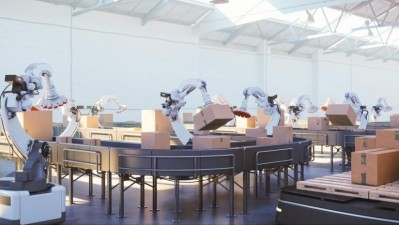Sustainable packaging
Will flexible packaging revolutionise confectionery casing?

Various factors are driving the rise of confectioners’ interest in flexible packaging. So much so that these adaptable casings are increasingly making their way into R&D plans throughout the global confectionery industry.
Flexible packaging is a big trend in confectionery in 2024, growing as more and more brands look for ways to reflect consumer demands, protect the environment, bolster their environmental, social and governance plans (ESG) and save costs.
The flexible plastic packaging sector is expected to experience significant growth over the next six years, reaching an estimated global value of $304bn by 2030, Statista reports. This is up from approximately $210bn in 2022.
“Flexible plastic packaging is unique in that it is lightweight, has a low environmental impact, and is easy to decorate for shelf stand out,” says Brian Lodge, Director of Plastics and Flexible Packaging of British Plastics Federation (BPF), the UK’s plastics trade association.
Moving away from pure plastics
Flexible plastic packaging is creating various opportunities for the confectionery industry, including the technologists who make them and the manufacturers who adopt them. And these benefits appeal to both their environmental considerations and economic needs.
Environmentally friendly packaging is a crucial consideration for shoppers when selecting a sustainable confectionery brand. Deloitte research shows that 94% of consumers believe it’s a brand’s responsibility to make products that don’t harm the earth. Recycling claims lead on confectionery product launches, while plastic-free packaging claims are showing the fastest growth, Innova market insights reveal.
Yet, with 63% of confectionery brands opting for plastic packaging to house their sweet treats in and only 9% of the world’s plastic waste recycled, there’s a long way to go to see the switch from plastics to other forms of packaging or effective waste-removing recyclability. And it’s here that the answer may lie in flexible packaging.
“By being lightweight, the use of precious resources is reduced significantly from alternatives,” says Lodge. Lightweight packaging materials that avoid using as many valuable resources offer environmental advantages by causing less pollution in distribution.
Brands like Constantia Flexibles and Quality Street opt for paper packaging, while others are also releasing products that combine plastics and paper. Plant-based plastics, edible films, kraft paper, post-consumer recycled materials (PCR) and Expanded Polystyrene (EPS) are all entering the confectionery industry.
Biodegradable and compostable packaging options that mix plastics with other materials may prove a stepping stone to helping the confectionery sector contribute to tackling the plastics crisis.
What are the key benefits?
Flexible plastic packaging also offers economic benefits to manufacturers as they can lower taxation via the Plastics Packaging Tax and Extended Producer Responsibility (EPR) rules.
“Developments in barrier technologies, material reduction and recyclability are being introduced by manufacturers to further enhance the format’s credentials,” says Lodge.
Flexible plastic packaging can save vital space, lower packaging weight and subsequently reduce shipping costs and emissions. Switching from glass jars to flexible confectionery pouches, for example, can cut the product’s packaging weight by up to 90%.
How can manufacturers adapt?
Packaging companies are gearing up their production processes and equipment for the future of flexible packaging. Confectionery industry manufacturers have also invested in new packaging machinery to meet the sector’s requirements.
Italian packaging machine manufacturer ACMA, for example, has detailed its plan to balance technological development with sustainability, launching its ACMA Next R&D laboratory and its ACMA Cares Programme, which aims to help companies keep their machinery while making tech advancements.
Meanwhile, multinational packaging machinery and robotics company Cama highlights its use of advanced tech to transform end-of-line packaging and meet today’s flexible packaging expectations. In May, Cama released its MTL Monoblock, a packaging machine designed to manage different types of products and cardboard package formats simultaneously.
Packaging design companies like ePac are also providing customised creations for flexibly packaged products.
“For brand owners, flexible packaging can deliver environmental benefits, lower taxation, reduce distribution costs (and emissions), and increase shelf standout through improved graphics and print techniques,” Lodge confirms.
















